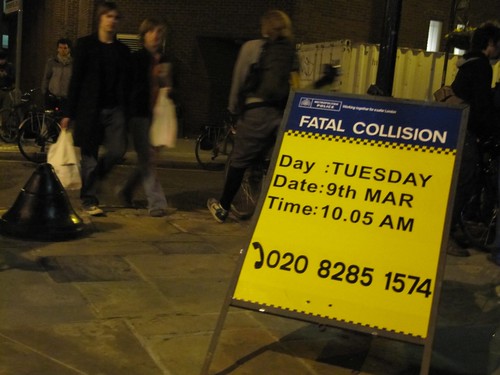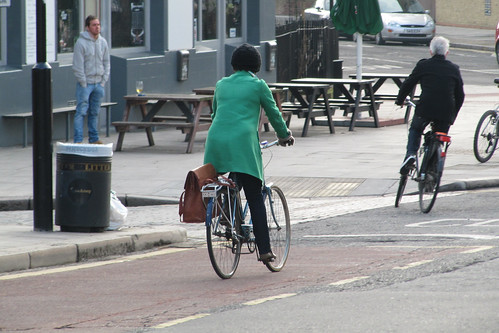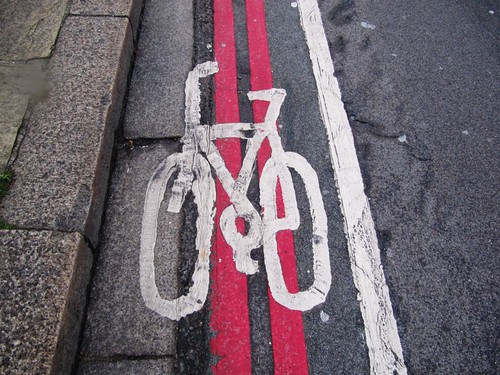- - -
After close proximity collisions, the largest source of deaths and serious injuries for cyclists (17%) comes, perhaps surprisingly, from OTHER vehicles disobeying junction controls. To clarify, that means that 17% of cyclists killed or seriously injured have been hit as a consequence of other vehicles jumping red lights or not giving way at stop signs. By contrast, cyclists jumping red lights into the path of oncoming traffic represent just 5% of casualties (1 fatality and 22 seriously injured.) Unfortunately the statistics are not detailed enough to reveal whether the cyclist jumped the red light as a consequence of just 'being in a rush' or to put distance between themselves and other traffic (for example HGVs), or whether there was an ASL box at the junction they jumped and whether or not this was occupied by other vehicles.
To me, the solution to this issue is clear; design junctions with ASLs with approach lanes from the CENTRE (not left) of the road, and ensure that ASLs, stop lines and junction controls are enforced for ALL road users. Sadly, with the Met's road safety funding being cut by £10million by our Mayor I don't see this happening any time soon. (It's worth remembering that this is the same 'cycling Mayor' who moved to scrap the Commercial Vehicle Education Unit, the only Police department with Health & Safety Executive powers which could take dangerous or illegal trucks off of London's roads. After much campaigning by the friends and families of cyclists who had been previously killed by trucks, and by cycling campaign groups, the Met moved to retain the unit itself and absorb the gap left in it's funding after the withdrawal of cash from TfL and the Mayor.)
The cycle safety plan has many other points and action plans, and is generally a much stronger document than the draft which was widely consulted on last year. Plus points include boosting training provision for cyclists to coincide with the launch of the cycle hire and cycle superhighway schemes, and continuing to support London boroughs to fund cycle training for residents. (Incidentally, for those who didn't know, all London boroughs now offer cycle training for free or at a highly reduced rate. Even if you consider yourself an 'advanced' cyclist, if you've never taken your quota of free lessons I strongly recomend you do.) Other positives include working with the London Criminal Justice Board to review cycling casualty stats with a view to strengthening criminal justice arrangements for dealing with such cases, and trialling 'trixi' concave mirrors at traffic lights to aid large vehicle drivers to be able to see down the left hand side of their vehicles and to check that there are no cyclists trapped down there before they move off.
Sadly, for all of the good in the plan, there is one key problem that greatly concerns me: there is no timetable within it for the implementation of any of the measures outlined. Call me a cynic, but I'm sure that politicians have expressed intentions before, but without a firm timetable for delivery there is no guarantee that they will actually do any of the things listed.
Lastly, in the light of the deaths at the beginning of the week my thanks to those of you who wrote / emailed and Tweeted the Mayor and asked him to acknowledge them. Eventually he did so, describing them as 'tragedies' and encouraged his 70,000 twitter followers to watch the new cycle safety video and to watch out for cyclists. A small step, but let's hope that they do.


























